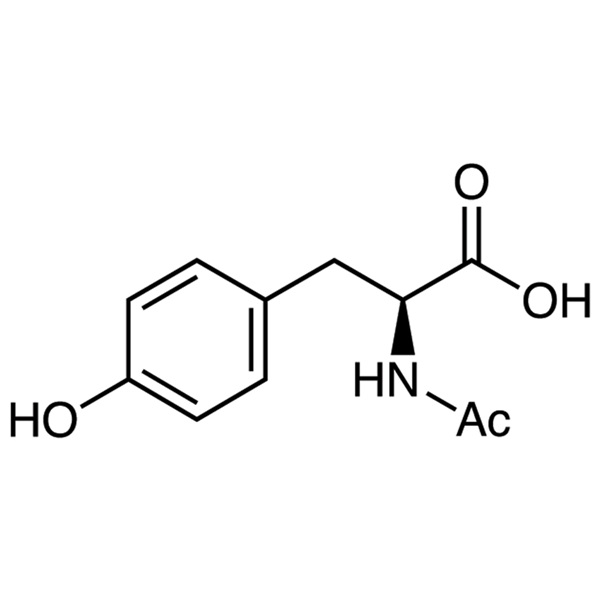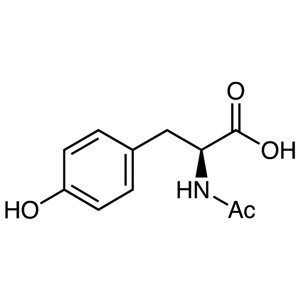N-Acetyl-L-Tyrosine CAS 537-55-3 (Ac-Tyr-OH; NALT) Assay 99.0~101.0 Factory
Shanghai Ruifu Chemical Co., Ltd. is the leading manufacturer and supplier of N-Acetyl-L-Tyrosine (Ac-Tyr-OH; NALT) (CAS: 537-55-3) with high quality. Ruifu Chemical supplys a series of amino acids and derivatives. High quality product, reasonable price, excellent and fast after-sales service are the commitments of Ruifu Chemical to the customers. We can provide COA, worldwide delivery, small and bulk quantities available. If you are interested in N-Acetyl-L-Tyrosine, Please contact: alvin@ruifuchem.com
| Chemical Name | N-Acetyl-L-Tyrosine |
| Synonyms | Ac-Tyr-OH; Ac-L-Tyr-OH; N-Ac-L-Tyr; NALT; Ac-Tyrosine; Acetyltyrosine; N-Acetyltyrosine; Acetyl-Laevo-Tyrosine; L-N-Acetyltyrosine; (2S)-2-(Acetylamino)-3-(4-Hydroxyphenyl)Propanoate; (S)-2-Acetamido-3-(4-Hydroxyphenyl)propanoic Acid; N-Acetyl-(S)-2-Amino-3-(4-Hydroxyphenyl)propionic Acid; (2S)-2-(Acetylamino)-3-(4-Hydroxyphenyl)propanoic Acid |
| Stock Status | In Stock, Production Capacity 30 Tons per Year |
| CAS Number | 537-55-3 |
| Molecular Formula | C11H13NO4 |
| Molecular Weight | 223.23 g/mol |
| Melting Point | 150.0 to 154.0℃ |
| Density | 1.304 |
| Water Solubility | Soluble in Water, Almost Transparency |
| Storage Temp. | Sealed in Dry, Store at Room Temperature |
| COA & MSDS | Available |
| Classification | Amino Acids & Derivatives |
| Brand | Ruifu Chemical |
| Hazard Codes | Xi - Irritant | F | 10 |
| Risk Statements | 41-36/37/38 | TSCA | Yes |
| Safety Statements | 26-39-36 | HS Code | 2922491990 |
| WGK Germany | 3 |
| Items | Inspection Standards | Results |
| Appearance | White Crystals or Crystalline Powder | Conforms |
| Identification | Infrared Absorption Spectrum | Conforms |
| Specific Rotation [α]20/D | +46.5° to +49.0°(C=2 in H2O) |
+47.2° |
| State of Solution (Transmittance) | ≥96.0% | 98.3% |
| Chloride (Cl) | ≤0.020% | <0.020% |
| Sulfate (SO4) | ≤0.020% | <0.020% |
| Ammonium (NH4) | ≤0.020% | <0.020% |
| Iron (Fe) | ≤30ppm | <30ppm |
| Heavy Metals (Pb) | ≤10ppm | <10ppm |
| Arsenic (As2O3) | ≤2.0ppm | <2.0ppm |
| Tyrosine | ≤1.00% | Conforms |
| Loss on Drying | ≤0.50% | 0.25% |
| Residue on Ignition (Sulfated) | ≤0.10% | 0.07% |
| Assay | 99.0 to 101.0% | 99.5% |
| pH Value | 2.0 to 3.0 | 2.3 |
| Conclusion | Meets the Standard of AJI97, USP35 | |
| Main Uses | Dietary Supplements; Food Additives; Pharmaceutical Intermediates | |
N-Acetyl-L-Tyrosine (Ac-Tyr-OH; NALT) (CAS: 537-55-3) AJI97 Test Method
N-Acetyl-L-Tyrosine, when dried, contains not less than 99.0 percent and not more than 101.0 percent of N-Acetyl-L-Tyrosine (C11H13NO4).
Description: White crystals or crystalline powder, strongly acid taste
Freely soluble in water.
Solubility (H2O, g/100g): 17.5 (20℃), 72.4 (40℃), 158 (60℃)
Identification: Compare the infrared absorption spectrum of the sample with that of the standard by potassium bromide disc method.
Specific Rotation [α]20/D: Dried sample, C=4, H2O
State of Solution (Transmittance): 0.5g in 10ml of H2O, spectrophotometer, 430nm, 10mm cell thickness.
Chloride (Cl): 0.7g, A-1, ref: 0.40ml of 0.01mol/L HCl
Ammonium (NH4): B-1
Sulfate (SO4): 1.2g, (1), ref: 0.50ml of 0.005mol/L H2SO4
Iron (Fe): 0.5g, ref: 1.5ml of Iron Std. (0.01mg/ml)
Heavy Metals (Pb): 2.0g, (3), ref: 2.0ml of Pb Std. (0.01mg/ml)
Arsenic (As2O3): 1.0g, (1), ref: 2.0ml of As2O3 Std.
Loss on Drying: at 105℃ for 3 hours
Residue on Ignition (Sulfated): AJI Test 13
Assay: Dried sample, 300mg, (1), 40ml H2O, (2), 0.1mol/L NaOH, 1ml=22.323mg C11H13NO4
Tyrosine: Liquid chromatography. Operating condition: Detector: UV absorption photometer (214nm); Column: ODS, 4.6mm x 150mm; Column Temperature: Room temperature. Flow rate: 1ml/min; Mobile phase: 0.04mol/L solution of monopotassium phosphate (pH 4.35): Methanol (193:3)
pH: 1.25g in 50ml of H2O
Recommended storage limit and condition: Preseved tight containers at controlled room temperature (2 years).
N-Acetyl-L-Tyrosine (Ac-Tyr-OH; NALT) (CAS: 537-55-3) USP35 Test Method
DEFINITION
N-Acetyltyrosine contains NLT 98.5% and NMT 101.0% of C11H13NO4, as N-Acetyl-L-Tyrosine, calculated on the dried basis.
IDENTIFICATION
A. INFRARED ABSORPTION <197K>
B. OPTICAL ROTATION, Specific Rotation <781S>
Sample solution: 10 mg/mL
Acceptance criteria: NLT +46.0° and NMT +49.0°, determined at 20°
C. The RF value of the principal spot of the Sample solution in the test for Organic Impurities corresponds to that of Standard solution 1.
ASSAY
PROCEDURE
Sample solution: Dissolve about 180 mg of N-Acetyltyrosine, weighed, in 50 mL of carbon dioxide-free water.
Titrimetric system
(See Titrimetry <541>)
Mode: Direct titration
Titrant: 0.1 N sodium hydroxide VS
Endpoint detection: Potentiometric
Equivalency: Each mL of 0.1 N sodium hydroxide VS is equivalent to 22.32 mg of C11H13NO4.
IMPURITIES
Inorganic Impurities
RESIDUEON IGNITION <281>: NMT 0.1%
CHLORIDE AND SULFATE, Chloride <221> NMT 200 ppm. A 0.7-g portion shows no more chloride than corresponds to 0.40 mL of 0.01 N hydrochloric acid.
CHLORIDE AND SULFATE, Sulfate <221> NMT 200 ppm. A 1.2-g portion shows no more sulfate than corresponds to 0.25 mL of 0.020 N sulfuric acid.
IRON <241>: NMT 20ppm
HEAVY METALS, Method I <231>: NMT 10ppm
Organic Impurities
PROCEDURE
Adsorbent: 0.25-mm layer of chromatographic silica gel mixture
Standard stock solution 1: 8 mg/mL of USP N-Acetyl-L-tyrosine RS in a mixture of water, glacial acetic acid, and alcohol (3:3:94)
Standard solution 1: Dilute Standard stock solution 1 with alcohol to obtain a solution having a known concentration of about 0.4 mg/mL
Standard solution 2: 0.8 mg/mL of USP L-Tyrosine RS dissolved in a mixture of glacial acetic acid and water (1:1), and diluted with alcohol
Sample solution: Transfer 0.8 g of N-Acetyltyrosine to a 10-mL volumetric flask, dissolve in 6 mL of a mixture of glacial acetic acid and water (1:1), and dilute with alcohol to volume.
Application volume: 5 µL
Developing solvent system: A mixture of ammonia and 2-propanol (3:7)
Spray reagent: Dissolve 0.2 g of ninhydrin in 100 mL of a mixture of butanol and 2 N acetic acid (95:5).
System suitability
Suitability requirements: The chromatogram of the System suitability solution exhibits two clearly separated spots.
Analysis: Proceed as directed for Chromatography <621> Thin-Layer Chromatography. After air-drying the plate, repeat the development process. After air-drying a second time, spray with Spray reagent, and heat between 100° and 105° for about 15 min.
Acceptance criteria: Any secondary spot of the Sample solution is not larger or more intense than the principal spot of the Standard solution1, except for the spot corresponding to tyrosine, which is not larger or more intense than the principal spot from Standard solution 2.
Individual impurities: NMT 0.5%
Limit of tyrosine: NMT 1.0%
SPECIFIC TESTS
LOSSON DRYING <731>: Dry a sample at 105℃ for 3 h: it loses NMT 0.1% of its weight.
ADDITIONAL REQUIREMENTS
PACKAGING AND STORAGE: Preserve in well-closed containers, and store at controlled room temperature.
USP REFERENCE STANDARDS <11>
USP N-Acetyl-L-tyrosine RS
USP L-Tyrosine RS
Package: Fluorinated Bottle, Aluminium foil bag, 25kg/Cardboard Drum, or according to customer's requirement.
Storage Condition: Store in sealed containers at cool, dry and ventilated warehouse away from incompatible substances. Protect from light and moisture. Keep away from strong oxidizing agents.
How to Purchase? Please contact Dr. Alvin Huang: sales@ruifuchem.com or alvin@ruifuchem.com
15 Years Experience? We have more than 15 years of experience in the manufacture and export of a wide range of high quality pharmaceutical intermediates or fine chemicals.
Main Markets? Sell to domestic market, North America, Europe, India, Korea, Japanese, Australia, etc.
Advantages? Superior quality, affordable price, professional services and technical support, fast delivery.
Quality Assurance? Strict quality control system. Professional equipment for analysis include NMR, LC-MS, GC, HPLC, ICP-MS, UV, IR, OR, K.F, ROI, LOD, MP, Clarity, Solubility, Microbial limit test, etc.
Samples? Most products provide free samples for quality evaluation, shipping cost should be paid by customers.
Factory Audit? Factory audit welcome. Please make an appointment in advance.
MOQ? No MOQ. Small order is acceptable.
Delivery Time? If within stock, three days delivery guaranteed.
Transportation? By Express (FedEx, DHL), by Air, by Sea.
Documents? After sales service: COA, MOA, ROS, MSDS, etc. can be provided.
Custom Synthesis? Can provide custom synthesis services to best fit your research needs.
Payment Terms? Proforma invoice will be sent first after confirmation of order, enclosed our bank information. Payment by T/T (Telex Transfer), PayPal, Western Union, etc.
Function & Application of N-Acetyl-L-Tyrosine (Ac-Tyr-OH; NALT) (CAS: 537-55-3) powder
1. N-Acetyl-L-Tyrosine is an acetyl derivative of the amino acid, L-tyrosine. It is freely soluble in water compared to L-tyrosine and is commonly used as a parenteral nutrition supplement. N-Acetyl-L-Tyrosine , a stable and more soluble form of tyrosine, has been incorporated in some currently available commercial parenteral amino acid formulations such as TrophAmine and Aminosyn-II.
2. N-Acetyl-L-Tyrosine is involved in catecholamine production. It can be used as a cell culture media component in the commercial biomanufacture of therapeutic recombinant proteins and monoclonal antibodies.
3. N-Acetyl-L-Tyrosine it is an essential amino acids, which is a kind of important nutrition for human and animal metabolism, growth and development plays an important role, could be widely used in food, pharmaceutical etc.
4. N-Acetyl-L-Tyrosine plays a necessary part in the synthesis of dopamine and other hormones in your body. It can boost levels of the neurotransmitters dopamine, norepinephrine and epinephrine. It helps to support higher levels of focus and cognitive function. It can increase working memory and feelings of well-being.
5. N-Acetyl-L-Tyrosine is modified from normal Tyrosine because it contains the addition of acetic acid. This actually helps to increase the compound's bioavailability so that it is better absorbed directly into the bloodstream.
6. N-Acetyl-L-Tyrosine is a highly bioavailable form of L-Tyrosine for the natural precursor treatment of low moods N-Acetyl-L-Tyrosine can be used in lower doses than L-Tyrosine. Ordinary L-Tyrosine is less stable and insoluble in water, which may result in reduced bioavailability.
7. N-Acetyl-L-Tyrosine enhances the solubility and stability making it a more rapidly absorbed and bioavailable form of the amino acid L-Tyrosine which is less prone to urinary excretion.
-
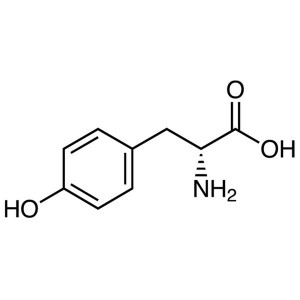
D-Tyrosine CAS 556-02-5 H-D-Tyr-OH Assay 98.5~1...
-
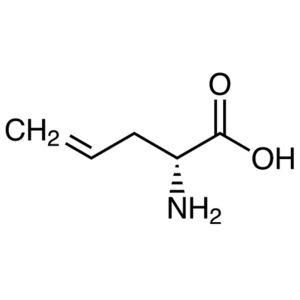
D-Allylglycine CAS 54594-06-8 Assay ≥98.0% (HPLC)
-
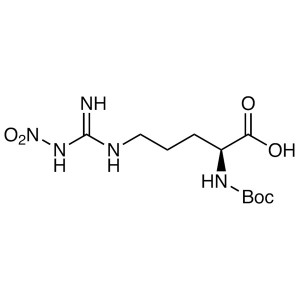
Boc-Arg(NO2)-OH CAS 2188-18-3 Purity ≥98.5% (HP...
-
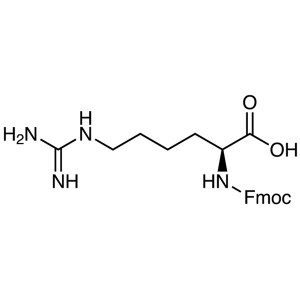
Fmoc-L-Homoarginine CAS 776277-76-0 Assay ≥97.0...
-
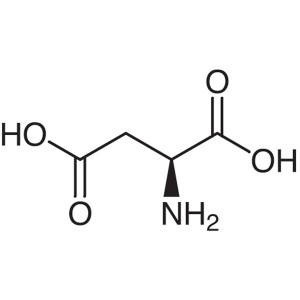
L-Aspartic Acid CAS 56-84-8 (H-Asp-OH) Assay 98...
-
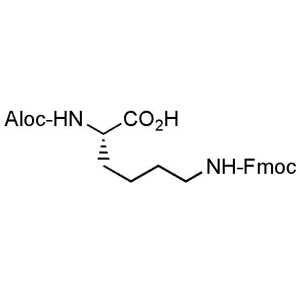
Alloc-Lys(Fmoc)-OH CAS 186350-56-1 Assay ≥99.0%...

